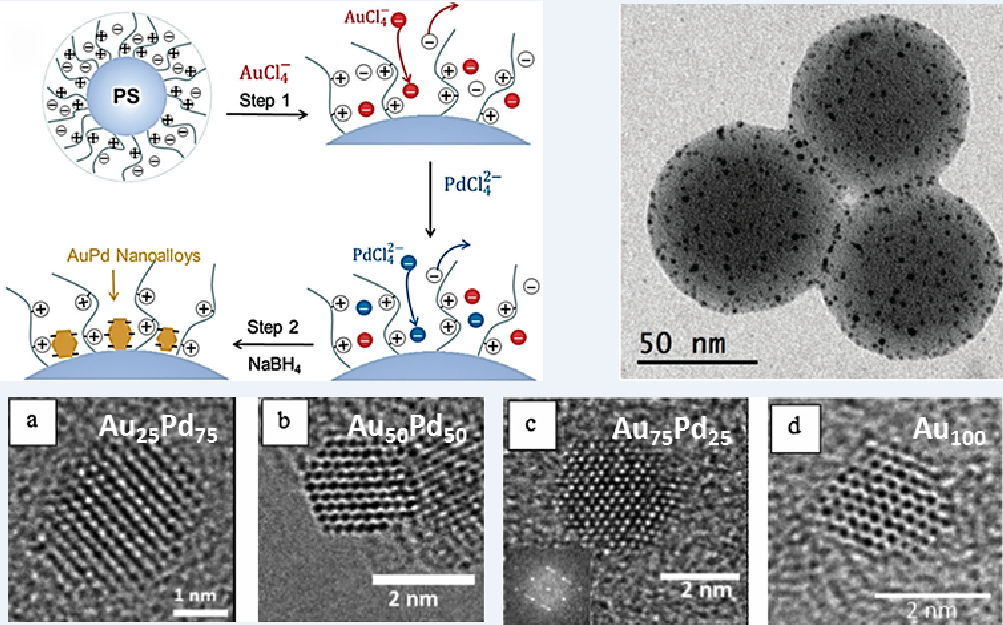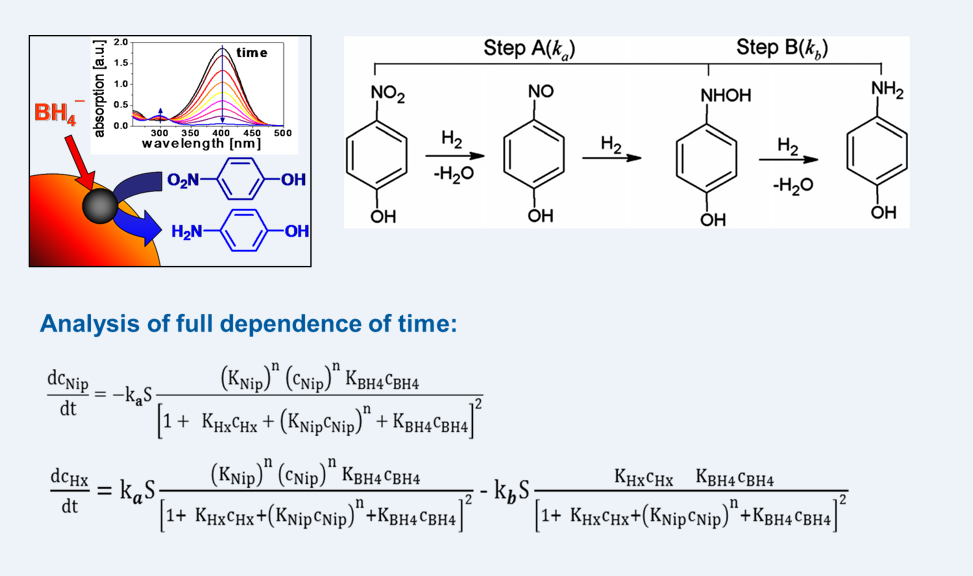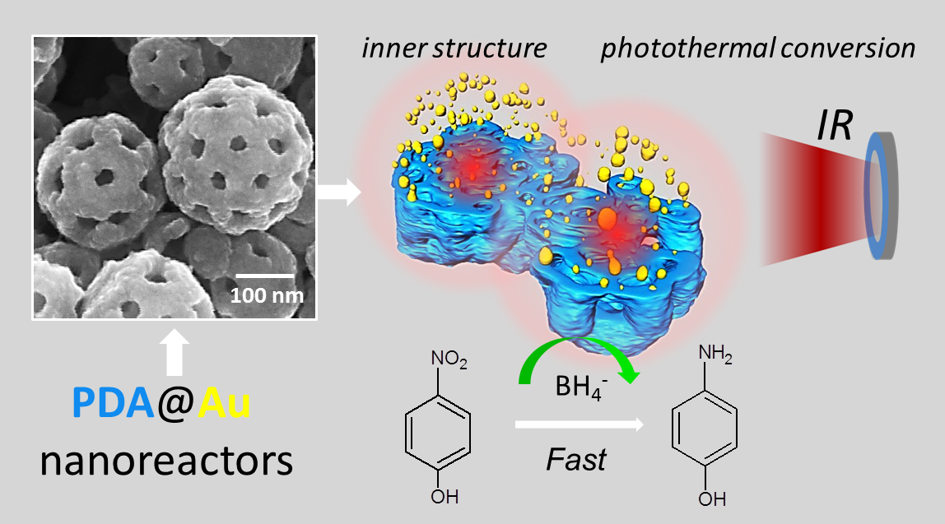Institute Electrochemical Energy Storage
Nanoreactors for Catalysis
1. Polymeric nanoreactors:
Spherical polyelectrolyte brushes (SPB) consist of a solid core (diameter: ca.100nm) onto which long chains of anionic or cationic polyelectrolyte are densely grafted. Metal ions can be immobilized into polyelectrolyte brushes as counter ions. Reduction of these immobilized metal ions leads to nanoparticles of the respective metal. These noble metal nanoparticles or nanoalloys can be used for catalysis in aqueous media, that is, under very mild conditions. Thus, the composite systems of metallic nanoparticles and spherical polyelectrolyte brushes allow us to do “green chemistry” and conduct chemical reaction in a very efficient way.
Thermosensitive core-shell microgels can act much in a way of a “nanoreactor” that immobilizes the metallic or metal oxide nanoparticles. The shell consists of poly (N-isopropylacrylamide) (PNIPA) network crosslinked by N, N’-methylenebisacrylamide (BIS). Metallic or metal oxide nanoparticles embedded in such a network are fully accessible by reactant at low temperature. Above the transition, however, the marked shrinking of the network should be followed by a concomitant slowing down of the diffusion of reactants within the network. Thus, the catalytic activity of embedded metal or metal oxide nanoparticles can be modulated by the volume transition of microgel particles.
References:
- 1. Y. Lu, Y. Mei, M. Ballauff, M. Drechsler, Chem. Int. Ed. Engl. 2006, 45, 813-816.
- Y. Lu, J. Yuan, F. Polzer, M. Drechsler, J. Preussner, ACS nano 2010, 4, 7078-7086.
- H. Jia, R. Roa, Y. Lu, et al., J. Mater. Chem. A 2016, 4, 9677-9684.
- 3. Y. Lu, M. Ballauff, Prog. Polym. Sci. (invited review article) 2016, 59, 86-104.
- R. Roa, S. Angioletti-Uberti, Y. Lu, J. Dzubiella, F. Piazza, M. Ballauff, Z. Phys. Chem. 2018, 232(5–6): 773–803.
2. Kinetic study of model reaction
Kinetic studies of catalytic reactions are an essential part of our research in order to understand the mechanism of the reaction in the presence of metal nanoparticles. The catalytic reduction of 4-nitrophenol by NaBH4 to 4-aminophenol has been used as model system, which can be precisely followed by the UV-vis spectroscopy. The Langmuir-Hinshelwood kinetics has been used for the mechanistic analysis of the catalytic activity.
References
- S. Wunder, Y. Lu, M. Albrecht, M. Ballauff, ACS Catalysis 2011, 1, 908-916.
- P. Hervés, M. Pérez-Lorenzo, L.M. Liz-Marzán, J. Dzubiella, Y. Lu, M. Ballauff, Chem. Soc. Rev. (invited review article) 2012, 41 (17), 5577–5587.
- H. Jia, J. Cao, Y. Lu, Current Opinion in Green and Sustainable Chemistry 2017, 4, 16-22.
- S. Gu, S. Risse, Y. Lu, M. Ballauff, ChemPhysChem 2020, 21, 450-458.
3. Nanoreactors based on photothermal conversion materials
Photothermal conversion (PTC) nanostructures have great potential for applications in many fields and therefore they have attracted tremendous attention. Gold@Polydopamine particles with multi-compartment structure have been synthesized by using block copolymer of PS-b-P2VP as soft template and characterized by 3D electron tomography technique. The particles can be applied as catalytic nanoreactors for the full kinetic study of reduction reaction of 4-nitrophenol by NaBH4. A synergetic effect of NIR induced photothermal conversion as well as the complex inner structure of the nanoreactors results in a remarkable acceleration of the reduction of 4-nitrophenol.
- S. Mei, Z. Kochovski, R. Roa, S. Gu, X. Xu, H. Yu, J. Dzubiella, M. Ballauff, Y. Lu, NANO-MICRO LETT. 2019, 11, 83.
- S. Mei, X. Xu, R. D. Priestley, Y. Lu, Chem. Sci. 2020, 11, 12269.




